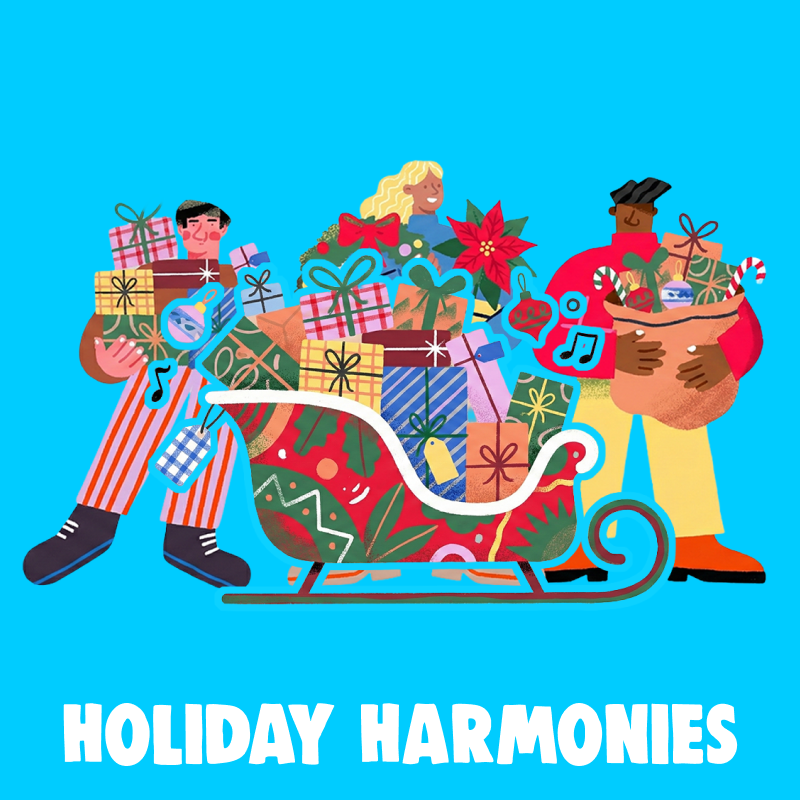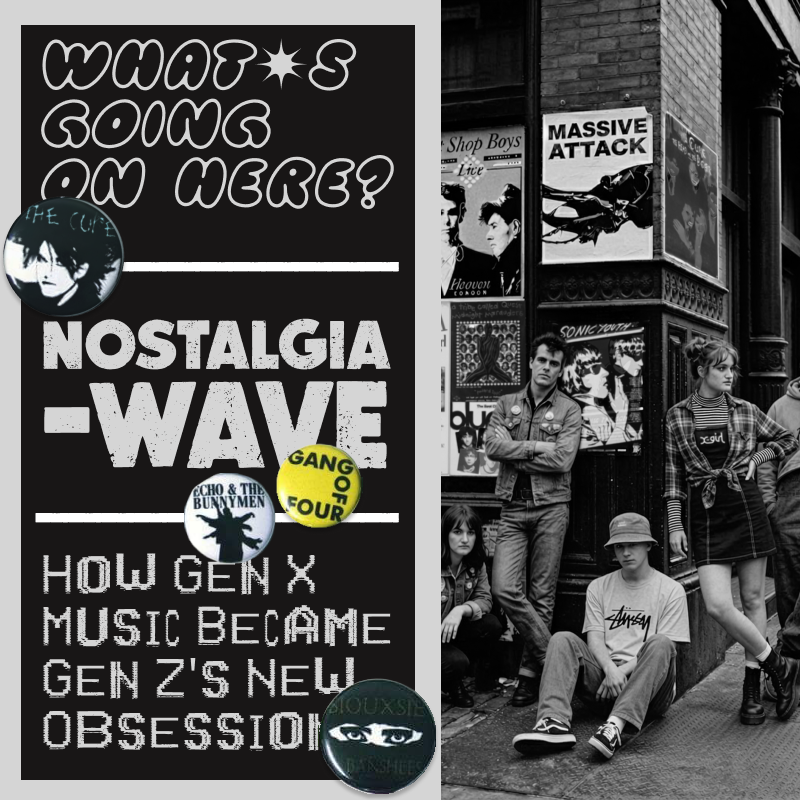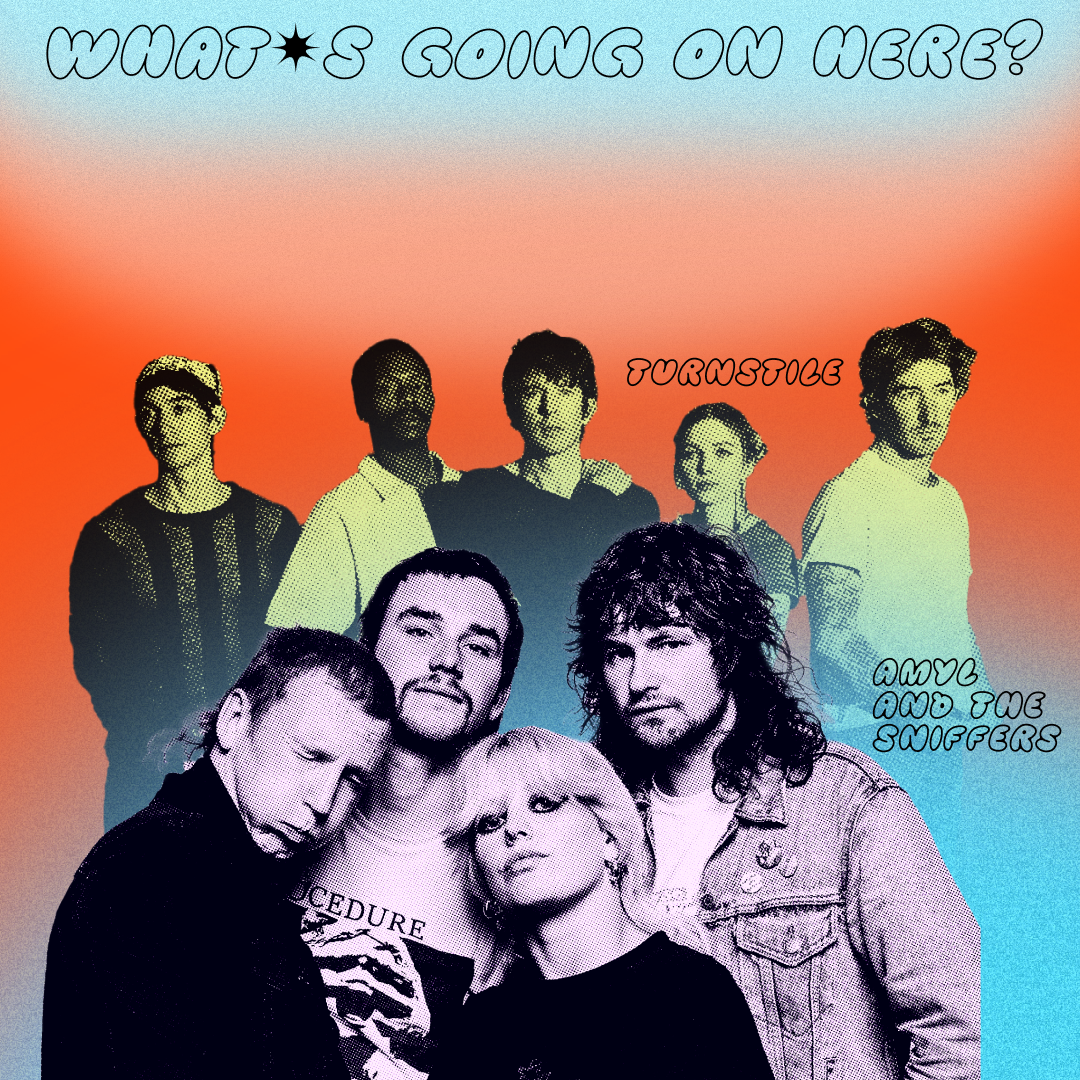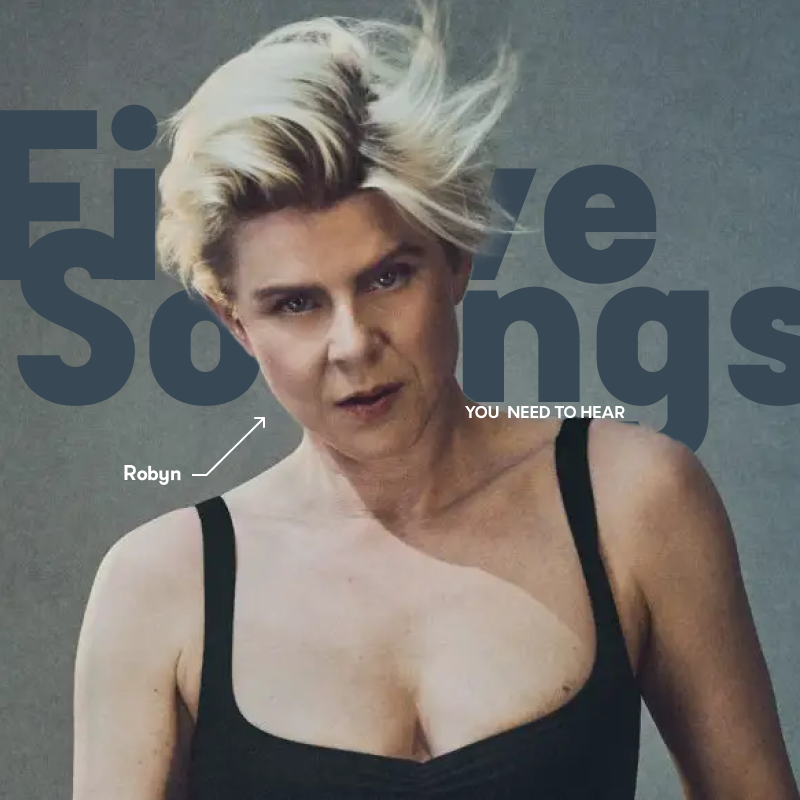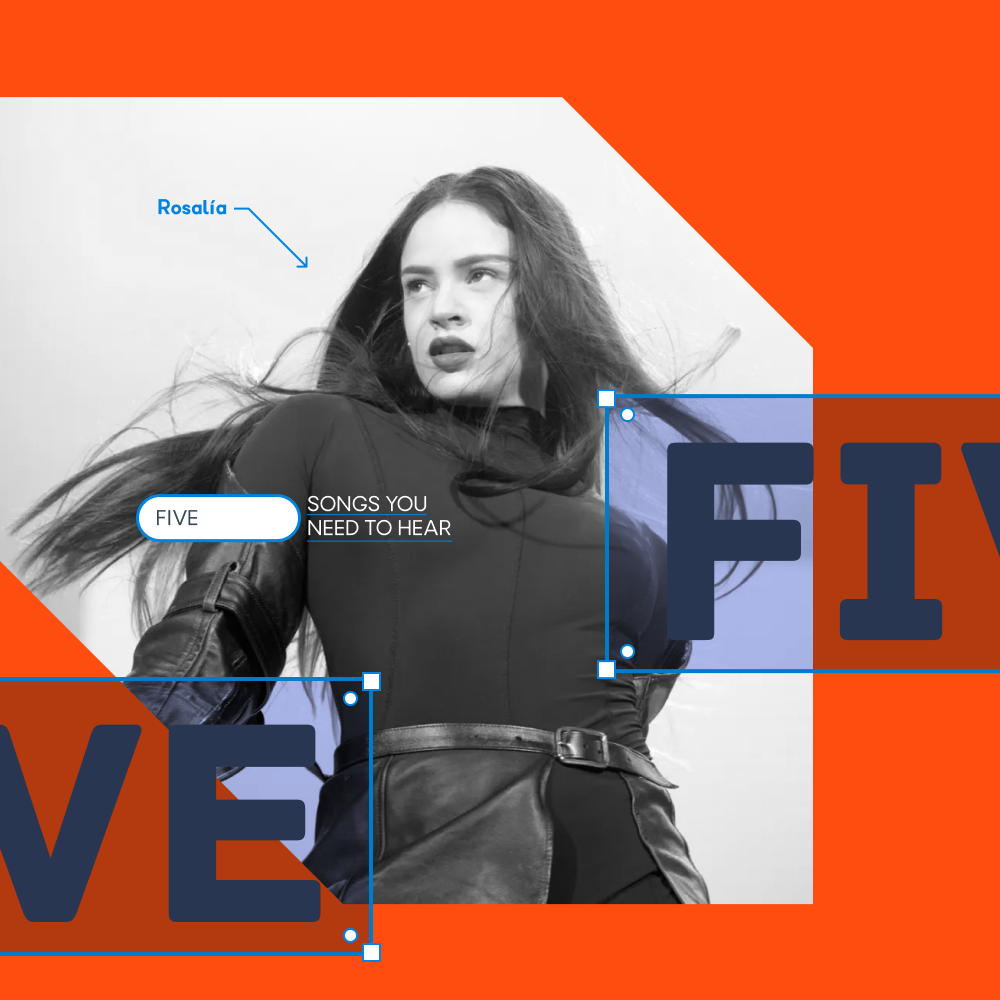Background Music for Retail Stores | The Retail Music Strategy Guide
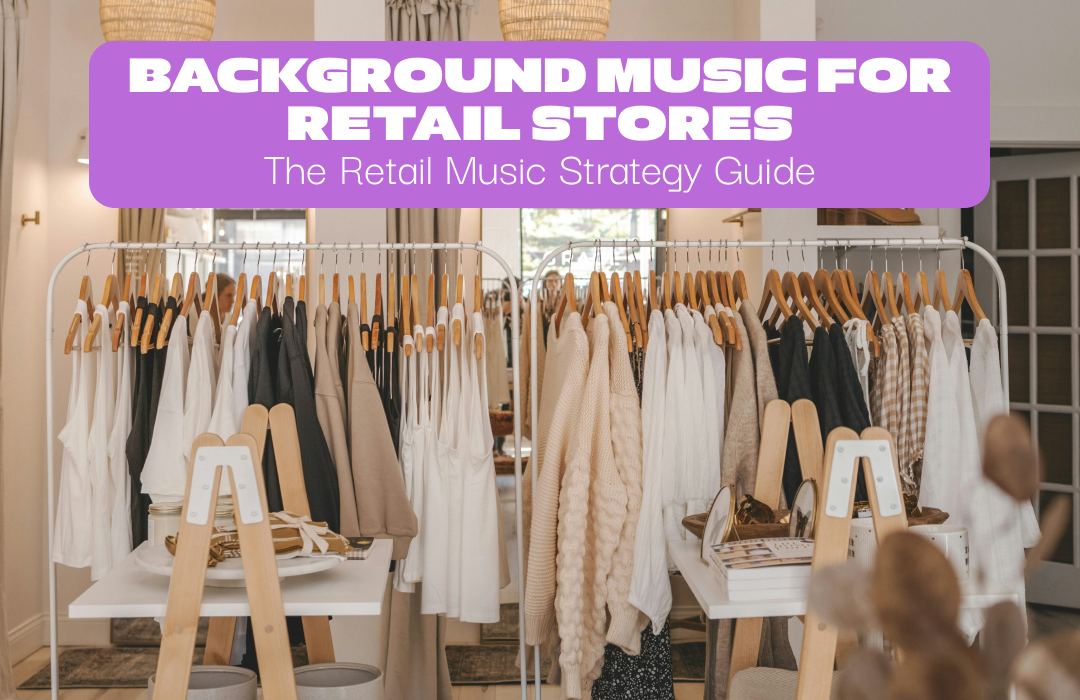
Background music for retail stores can boost sales by 38%. Simple tips for choosing the right music, getting licenses, and creating great shopping experiences.
Table of Contents
What is Background Music for Retail Stores?
It seems like an obvious question, right? Background music for retail stores is simply the music you play in your shop to make customers feel good and want to buy more. It’s not random songs on shuffle – it’s carefully picked music that matches your customers and your brand. Just throwing on a Spotify playlist (BTW, that’s not legal) or your personal favs isn’t necessarily going to resonate with your brand or customers.
Why Your Store Needs Good Background Music
The right background music for retail stores can make a huge difference in your sales. Here’s the proof: studies show that playing slower music can increase your sales by 38% compared to fast music. Another study found that the right background music made customers stay longer and buy 32% more stuff.
Good music makes customers feel comfortable, stay longer, and connect with your brand. This guide will show you exactly how to pick and use background music for retail stores to grow your business.
The Simple Science Behind Retail Music
How Music Changes Shopping Behavior
When customers walk into your store, their brains automatically react to whatever music is playing. This affects how they feel, how long they think they’ve been shopping, and whether they want to buy something.
Here’s what you need to know:
Music Tempo Matters: Slow music (100 beats per minute or less) makes people browse more and stay longer. Fast music (120+ beats per minute) gets people excited but might make them rush through your store. There’s no one right tempo because your store is constantly changing with varying foot traffic, product density, time of day, and other factors.
Volume is Key: Play music at a comfortable volume (about as loud as normal conversation). If it’s too loud, customers will leave faster. If it’s too soft, it becomes an annoyance rather than an enhancement.
The Familiar Songs Balance: When people recognize songs, they feel good about your store and are more likely to come back. But, you need to strike the right balance between familiarity and discovery. Familiar songs also create the “been there, done that” effect, and we subconsciously feel like we’ve spent more time than we have.
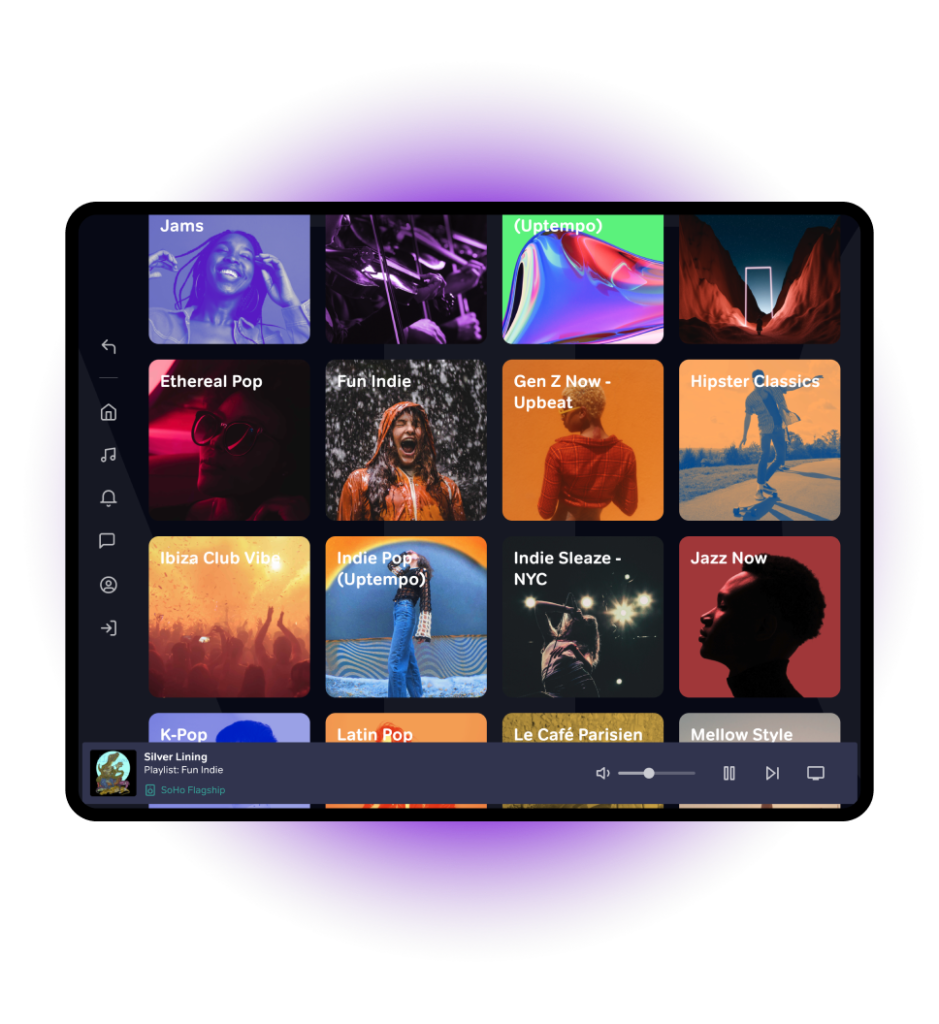
How to Choose Background Music for Retail Stores
Step 1: Know Who Your Customers Are
Your background music for retail stores should match what your customers like. Here’s a simple breakdown:
Younger Customers (Gen Z): Play current pop, hip-hop, indie, and electronic music, but remember, Gen Z doesn’t like to be pigeon-holed. Stay on the early side of trends rather than the most popular/over-played songs on TikTok.
Millennials: Mix current hits with throwback songs from the 2000s, plus some indie and alternative music. Throwing in current songs inspired by 2000s indie and pop is a great way to introduce your customers to something new. Being a source of discovery leads to more engagement and loyalty.
Gen X Customers: Lean in on music from the ’80s and ’90s, but figure out which cast member from “The Breakfast Club,” “Friends,” or “The Cosby Show” your customer identifies with. Theo Huxtable loved Digable Planets, John Bender was probably a big fan of Joy Division, and Ross thought U2 was the coolest. Don’t forget to tie in new stuff. There’s plenty of ’80s and ’90s-inspired music being made by Gen Z artists.
Older Customers (Baby Boomers): Choose classic rock, folk, disco, jazz, and music from the 60s through 80s. Modern soft pop and adult contemporary are a great companion.
We like to estimate what years a customer may have attended High School and College when looking for the ideal throwbacks.
Step 2: Match Music to Your Brand
Your background music for retail stores should match your store’s vibe:
- Luxury Stores: Sophisticated and refined songs that make customers feel special and exclusive
- Trendy/Fashion Stores: Create fresh, current, and stylish playlists that show you’re always ahead of the curve
- Casual/Friendly Stores: Aim for a warm, welcoming, and comfortable atmosphere that makes people want to hang out
- Sports/Active Stores: Build energetic, motivating, and pumped-up sets that get people excited to move
These suggestions will get you part of the way there, but your brand is far more complex, and the more you can tap into what makes you unique, the more on-target your music will be.
Step 3: Think About Your Store Type
Different stores need different background music for retail stores:
Clothing Boutiques: Curated playlists that change with the seasons and create a cozy shopping feel. The music should feel deliberate and authentic to your brand.
Big Department Stores: Music that appeals to lots of different people across all sections. Consider multiple zones of music that are laser-focused on each department.
Grocery Stores: Quiet background music that doesn’t distract from shopping yet is upbeat and fun, making the experience enjoyable. If you’re doing something new, go for a “this isn’t your parent’s grocery store” approach.
Electronics and Technology Stores: Modern, slightly energetic music that suggests you’re innovative without being too loud during demos. Think new and fun. Your customers want to be wowed and inspired.
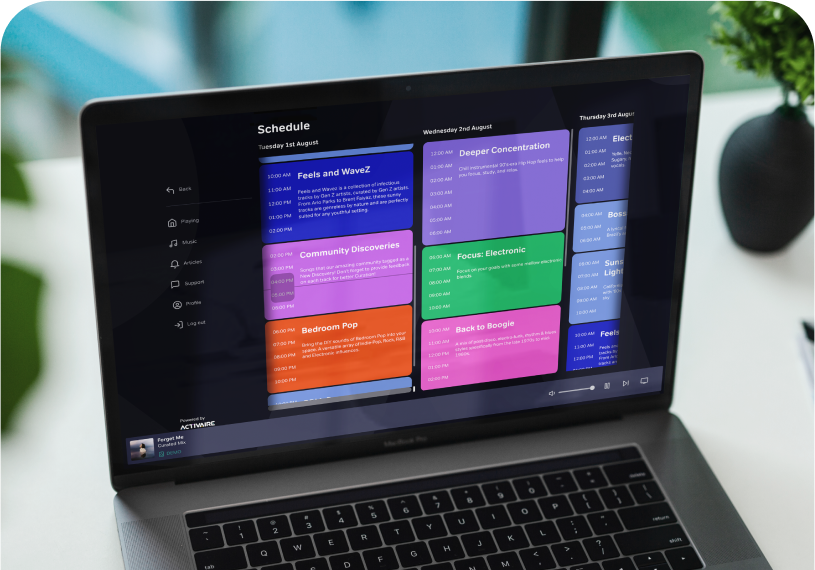
When to Play Different Music
Plan your background music for retail stores around when customers come in:
Morning: Start with medium-speed music (90-100 beats per minute) to welcome early customers without overwhelming them.
Busy Times: Keep steady energy (100-110 beats per minute) to handle crowds while encouraging people to move through your store.
Evening: Slowly switch to calmer music (80-90 beats per minute) as the day winds down.
Music for Different Times of Year
Change your background music for retail stores for holidays and events:
Holidays: Start adding holiday music slowly – 20% holiday songs six weeks before, then ramp up to 40% – 100% during the actual holiday.
Back-to-School: Play energetic, youthful music that appeals to students and parents.
Sales: Use slightly more energetic music to create excitement about your deals.
Events: Bring the party and make your customers feel like they’re having a night out on the town.
Background Music for Retail Stores: Technical Setup
Getting Good Sound Equipment
You need quality speakers that make your background music for retail stores sound good everywhere:
Where to Put Speakers: Place speakers every 15-20 feet so there are no quiet spots or areas that are too loud.
Covering Up Bad Sounds: Use music to cover up noise from air conditioning, conversations, and street sounds.
Different Areas: Set up different music zones for different parts of your store (entrance, main area, fitting rooms, checkout) so each area has the right feel.
Work with an AV integrator to select the right equipment and achieve the optimal speaker layout for each store. Remember, Bluetooth and Wi-Fi-enabled speakers are great but not always ideal and can require more maintenance and support than you think. The biggest complaint we receive about these systems is that store staff can easily override them and play their own music, which, at best, is off-brand and, at worst, totally inappropriate. TIP: Activaire Curator for Sonos bypasses the Sonos APP and eliminates these issues.

Music Licenses (The Legal Stuff You Need)
You have to follow the law when playing background music for retail stores:
Get the Right Licenses: You need licenses from ASCAP, BMI, and SESAC to legally play music in your store.
Don’t Use Personal Streaming: Services like Spotify and Apple Music aren’t allowed for businesses and can get you in big trouble with fines.
Use Business Music Services: Get music from companies that handle all the legal stuff and offer features made for retail stores.
How to Know If Your Music is Working
What to Track
Measure these things to see if your background music for retail stores is helping:
How Long People Stay: Track average time customers spend in your store using counters or your cash register system.
Sales per Square Foot: Watch how much money different areas of your store make.
Customer Happiness: Ask customers about your store’s atmosphere in surveys.
How Many People Buy: Track what percentage of visitors actually buy something before and after you change your music.
Testing Different Music
Try different background music for retail stores to see what works best:
Test Different Types: Switch between different music styles during similar times and compare your sales.
Test Volume: Try different volume levels (keeping it comfortable) to find what works best for your space.
Test Speed: Compare how different music speeds affect customer behavior and sales.
Common Mistakes with Background Music for Retail Stores
Playlist Problems
Playing the Same Songs: Use at least 30-40 hours of different music with frequent updates to prevent customers and employees from getting tired of hearing the same things.
Bad Song Content: Review all music for explicit language, sensitive topics, or any content that may offend customers or conflict with your brand.
Ignoring Your Staff: Your employees hear your music all day. Ask what they think and consider their comfort to keep them happy.
Not Checking In With Your Customers: Engage with your customers and find out what they’re interested in. The best playlists align with your brand’s ethos and your customers’ lifestyles.
No Regular Reviews: Touching base with your store teams and music provider will ensure you create a well-informed music program that evolves with your brand and customers.
Technical and Legal Problems
Poor Sound Quality: Buy good equipment and maintain it regularly so your background music for retail stores always sounds clear.
License Problems: Never use personal streaming accounts or unlicensed music – you can get fined $750-$30,000 per song.
Inconsistent Volume: Check and adjust volume throughout the day as noise levels and customer traffic change.
Staff Overrides: If there’s a way for your staff to bypass your music system and play their own music, they will, and the results aren’t always pretty.
Smart Ways to Use Background Music for Retail Stores
Creating Your Signature Sound
Make a unique musical identity that customers connect with your brand:
Share Your Playlists: Put your store playlists on streaming platforms so customers can enjoy your music at home too.
Collaborate with Local Artists: Partner with local musicians and DJs to create exclusive content that sets your brand apart.
Seasonal Signatures: Develop your own approach to holiday and seasonal music that customers look forward to.
Set Yourself Apart: Visit your competitors and take note of what they’re playing. You want to ensure that you sound like yourself and not like everyone else.
Being Responsible
Think about the bigger picture with your music choices:
Supporting Independent Artists: Play music from independent and local artists to help the creative community and make your brand different.
Being Inclusive: Make sure your music welcomes everyone and respects different backgrounds.
Community Connection: Use music to connect with your local area by featuring regional artists or local themes.
Wrapping Up: Making Music Work for Your Store
Background music for retail stores is way more than just sound in the background. It’s a business tool that changes how customers act, strengthens your brand, and increases your sales. When you understand how music psychology works, pick your songs carefully, follow the legal rules, and keep measuring results, you can create an audio environment that makes every part of your customer experience better.
Good background music for retail stores strategy takes ongoing attention and changes over time. Pay attention to how your customers react, watch industry trends, and be ready to adapt as your business and customers change.
Investing in thoughtful music strategy pays off through happier customers, longer visits, more sales, and stronger brand loyalty. Your store’s soundtrack isn’t just what customers hear – it’s how they feel about your brand, and that emotional connection creates lasting business success.
Frequently Asked Questions About Background Music for Retail Stores
What type of background music works best for retail stores? The best background music for retail stores depends on your customers and brand. Generally, a mix of current pop hits, classic hits from the past 20 years, indie/alternative, and instrumental music works well for most stores. The percentages depend on your customer types, brand profile, location, and other factors.
How loud should background music be in retail stores? Background music for retail stores should be about as loud as normal conversation (60-70 decibels). This creates a welcoming atmosphere without making it hard for customers to talk or think.
Do I need a license to play background music in my retail store? Yes, you need licenses from ASCAP, BMI, and SESAC to legally play background music in retail stores. Personal streaming services like Spotify aren’t allowed for businesses and can result in big fines.
How often should I change the background music in my retail store? Use at least 30-40 hours of different music so people don’t get tired of hearing the same songs. Update your playlists for seasons and refresh your music selection every few months to keep things interesting.
Can background music really increase retail sales? Yes! Research proves that the right background music for retail stores can increase sales by up to 38%. The right speed, volume, and type of music significantly affects how customers behave and what they buy.
What tempo should retail background music be? For most retail stores, music between 90-110 beats per minute works best. Slower music (72-90 BPM) makes people browse more, while faster music (110+ BPM) creates energy but might rush customers.
How much does background music for retail stores cost? Business music services typically cost $15-50 per month depending on your store size and features needed. This includes all licensing fees and is much cheaper than potential fines for using unlicensed music.
What’s the difference between background music services and regular streaming? Background music for retail stores services include commercial licenses, no ads, and features designed for businesses. Regular streaming services like Spotify are only for personal use and illegal in commercial settings.
Start Your Background Music for Retail Stores Strategy Today
Getting started with effective background music for retail stores is one of the easiest and most affordable ways to improve customer experience and boost sales. Use the strategies in this guide to create the perfect audio environment for your business and build stronger connections with your customers.
References:
- Milliman, R. E. (1982). “Using Background Music to Affect the Behavior of Supermarket Shoppers.” Journal of Marketing, 46(3), 86-91.
- Smith, P. C. & Curnow, R. (1966). “Arousal hypothesis and the effects of music on purchasing behavior.” Journal of Applied Psychology, 50(3), 255-256.
- Kellaris, J. J., & Kent, R. J. (1992). “The influence of music on consumers’ temporal perceptions: Does time fly when you’re having fun?” Journal of Consumer Psychology, 1(4), 365-376.
- Yalch, R. F., & Spangenberg, E. R. (2000). “The effects of music in a retail setting on real and perceived shopping times.” Journal of Business Research, 49(2), 139-147.
- Bruner, G. C. (1990). “Music, mood, and marketing.” Journal of Marketing, 54(4), 94-104.
- Areni, C. S., & Kim, D. (1993). “The influence of background music on shopping behavior: Classical versus top-forty music in a wine store.” Advances in Consumer Research, 20(1), 336-340.
- North, A. C., Hargreaves, D. J., & McKendrick, J. (1999). “The influence of in-store music on wine selections.” Journal of Applied Psychology, 84(2), 271-276.

